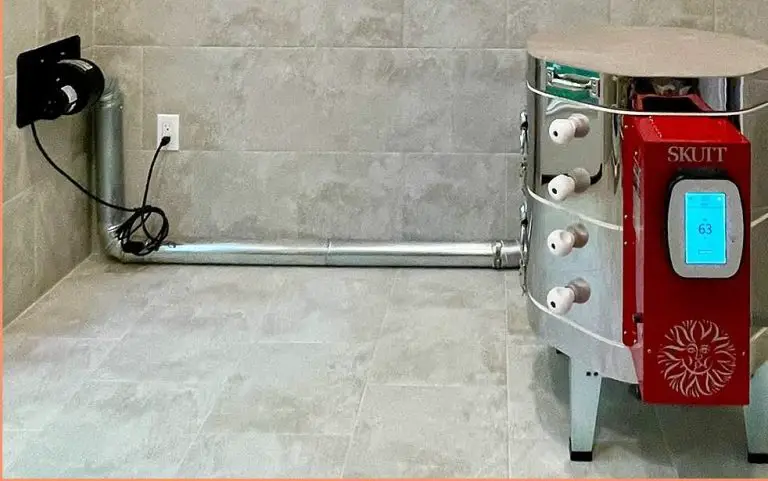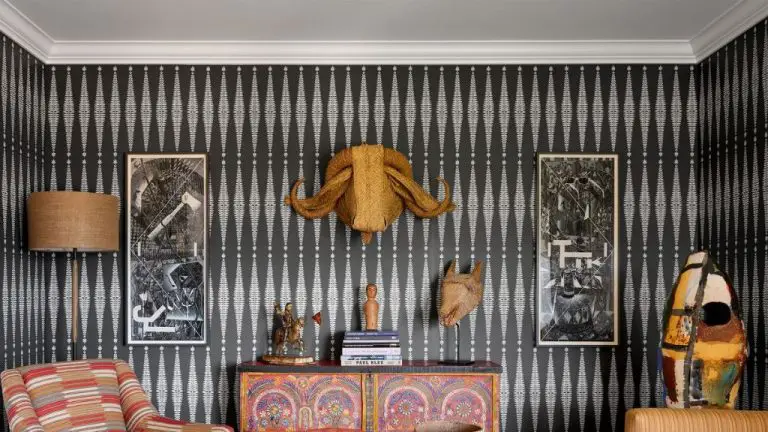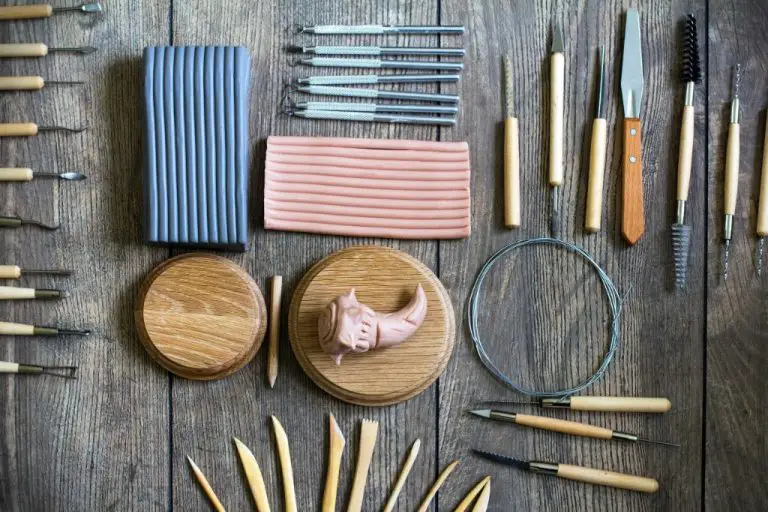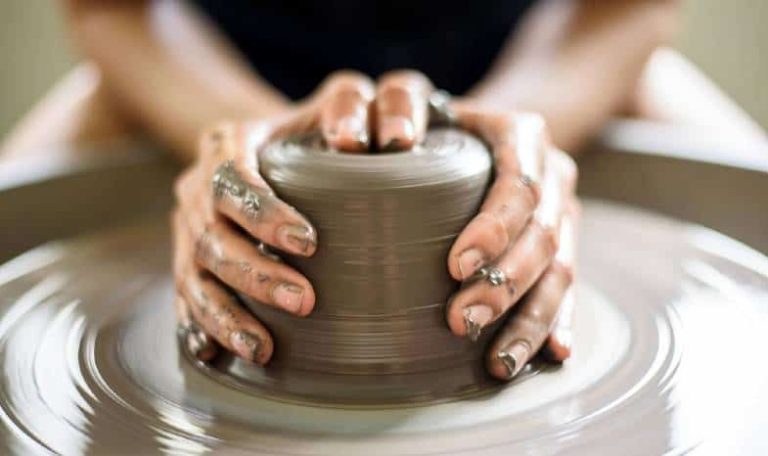What Can I Do With Terracotta Clay?
Terracotta clay is a type of clay that has a distinctive red-orange color. The word “terracotta” comes from the Italian word for “baked earth”.
Terracotta dates back over 4000 years to ancient China where it was used to create pottery, figurines, and early building materials. It became popular in ancient Greece and Rome for pottery and sculpture. Terracotta armies were even buried with ancient Chinese emperors.
The red-orange color comes from the high iron content in the clay. When terracotta clay is fired at high temperatures between 1000-1150°C, it undergoes a change in its crystalline structure, causing it to harden and become water resistant. The firing process also brings out the vibrant orange and red hues.
Terracotta is sturdier than many types of pottery because it can be fired at higher temperatures. It’s also more porous than other clays, making it easier to hand sculpt intricate details. These properties have made it a popular choice for pottery, sculpture, tiles, and decor for centuries.
Sculpting and Pottery
Working with terracotta clay is a great way to explore sculpting and handbuilding techniques like coils and slabs. To make a coiled pot, roll out “snakes” of clay into long coils, then stack the coils on top of each other, bonding them together with water or slip. Pinch the coils gently together and smooth the transitions between coils. For slab building, roll out flat sheets of clay to form the pot’s walls, then join and bond the sheets together.
Terracotta is also excellent for throwing on the pottery wheel. Center a clay lump on the wheel and open up the center with your thumbs. Then use the palms of your hands to shape the rotating clay into pots, bowls, vases and other forms. Refine details like rims and foot rings with specialized pottery tools. Allow pieces to dry completely before firing.
Once bisque fired, terracotta can be glazed to create colorful finishes. Apply liquid glazes by brushing, dipping or pouring. Low-fire glazes work best with terracotta. The final glaze firing melts the glazes into a smooth, glassy coating. Unglazed terracotta has an earthy, natural look. Clear finishes like wax or matte sealers help protect unglazed surfaces. With some basic skills, clay lovers can use terracotta to handcraft beautiful pottery at home.
Home Decor
Terracotta clay is a beautiful, natural material that can add warmth and texture to any home. It’s an extremely versatile material for home decor projects. Some popular ways to incorporate terracotta into home decor include:
Planters, Vases, Bowls
Terracotta planters and pots bring an organic, earthy feel to indoor and outdoor spaces. The natural reddish-orange hue of terracotta pairs well with greenery. Terracotta planters allow healthy drainage and airflow for plants. Glazed or unglazed terracotta pots come in endless shapes and sizes for all types of plants.
For the tabletop, terracotta makes wonderful vases, bowls, candle holders, and more. The clay can be shaped into beautiful, artistic forms. Terracotta vessels lend a handcrafted look to floral arrangements and centerpieces.
Wall Hangings and Murals
Slab-built terracotta tiles can form stunning wall hangings and murals. Tiles can be carved, etched, or painted. Hang a few decorative tiles together or create an entire mosaic wallcovering. If desired, use weatherproof outdoor grout between tiles installed outside. Indoor installations allow more flexibility.
Wind Chimes, Bells
The rich sound of terracotta wind chimes and bells brings energy into spaces. Hang chimes outdoors to detect the breeze. Or install sets of bell shapes indoors or out for visual and auditory impact. With creative hand-sculpting, terracotta offers limitless potential for musical and kinetic garden art.
Jewelry Making
Terracotta clay is a popular and versatile material for making jewelry. Here are some of the ways you can use terracotta clay to create beautiful and unique jewelry pieces:
Beads, pendants, rings
You can roll terracotta clay into round beads or hand sculpt pendants and rings in any shape you like. Allow your finished pieces to dry completely, then sand and polish them for a smooth finish. You can also paint your clay creations with acrylic paints and seal them with a water-based varnish.
Molds and stamps
Press terracotta clay into molds to easily make reproducible jewelry components like beads, buttons, and charms. You can also stamp patterns and textures into soft clay using rubber stamps. This allows you to quickly decorate your clay jewelry pieces.
Inlay techniques
Try inlaying other materials like crushed stones, glass tiles, or beads into the surface of terracotta clay jewelry pieces before baking them. This creates beautiful mosaic effects. You can also make clay jewelry with layers of contrasting colors for visual interest.
With some creativity, terracotta clay can be transformed into stunning artisan jewelry. The natural reddish hue of terracotta clay also provides an earthy, rustic look perfect for bohemian jewelry styles.
Garden Art and Decor
Terracotta clay is a versatile material for creating beautiful garden art and decorative accents. From sculptures to birdbaths, garden stakes to plaques, terracotta allows you to add artistic flair and visual interest to your outdoor space.
Sculptures made from terracotta make stunning centerpiece items for your garden. You can create simple geometric shapes or detailed figurines of animals, people, or mythological creatures. Terracotta is weather-resistant and suitable for placement outdoors in the elements. Strategically place your clay sculptures among your plants or as standalone focal points in your garden.
For a functional terracotta piece, consider installing a birdbath or fountain. The clay material is ideal for holding water and providing a place for birds to drink and bathe. You can opt for a basic dish style bath or something more ornate, like a tiered fountain with cherub statues. Position your birdbath or fountain in a visible spot so you can enjoy watching the birds drawn to it.
Smaller terracotta items like garden stakes and wall plaques allow you to add character throughout your garden. Stakes can be inserted into pots or garden beds and engraved with fun sayings or artwork. Plaques mounted on walls or fences can have inspirational quotes, your family name, or depictions of nature scenes. Let your creativity run wild when brainstorming personalized designs for your space.
Tiles and Mosaics
Terracotta clay is a popular material for creating decorative tiles and mosaics for the home. The natural reddish-orange color of terracotta provides a warm, earthy look that works well in kitchens, bathrooms, and other spaces.
Hand Painting Tiles
One great way to use terracotta tiles is to hand paint decorative designs on them. This allows you to add customized colors, patterns, and images to match your style. Terracotta bisque tiles can be painted with special ceramic glazes and enamels, then fired to make the colors permanent. Hand painting tiles takes some skill, but is very rewarding. You can create your own custom backsplash, accent wall, tabletop, or other feature.
Mosaic Techniques
Mosaics using small terracotta tiles are a fun option for a wall or floor design. Cut or form the terracotta tiles into shapes like squares, rectangles, diamonds, triangles, etc. Arrange the tile pieces close together like a puzzle on a backing material to form your mosaic design. Use tile adhesive to secure the pieces before grouting. Terracotta mosaics have an old-world, Mediterranean style. Add glass, stone or ceramic pieces to complement the clay.
Backsplashes, Countertops, Floors
Terracotta is durable enough to be used for kitchen, bath and flooring applications. Hand painted or mosaic backsplashes provide artful visual interest behind sinks and stoves. Terracotta countertops offer an organic, stone-like look, usually made by adhering tiles to the counter surface. For floors, terracotta tiles stand up well to foot traffic and spills. Sealing the tiles helps protect them. Well-designed terracotta tile installations can enhance many spaces with natural elegance.
Seasonal Crafts with Terracotta Clay
Terracotta clay is a fun and versatile material for making seasonal crafts and decorations. Here are some popular ideas for using terracotta clay during different holidays and seasons:
Holiday Ornaments and Decorations
During the winter holidays, terracotta clay can be used to make Christmas tree ornaments, menorahs, decorative figurines, garlands, and more. Roll out clay and cut into shapes using cookie cutters or freehand using a craft knife. Bake clay ornaments and decorations according to package directions and paint with acrylic paints and seal with glaze or varnish.
Nativity Scenes
Model your own nativity scene characters and stable out of terracotta clay. Sculpt figures of Mary, Joseph, baby Jesus, animals, angels, shepherds, and the three wise men. Allow figures to fully dry and harden before baking according to package directions. Paint your finished nativity scene and arrange on a base, in a box, or display shelf.
Pumpkins, Skulls, and Halloween Crafts
Get creative for Halloween by sculpting miniature pumpkins, skulls, tombstones, ghosts, bats, witches, and other spooky decorations from terracotta clay. Make haunted house DIY crafts like candle holders, bowls, and candy dishes. Use cookie cutters or freehand carve patterns and faces into your clay creations before baking. Paint with Halloween colors and display around your home for the season.
Kids’ Crafts with Terracotta Clay
Terracotta clay is a fun, creative material for kids’ crafts. It’s natural, non-toxic, and safe for children to handle. Simple handbuilding techniques like pinching, coiling, and smoothing are perfect for small hands to shape pots, animals, and more. Terracotta air-dries to a durable finish, so kids can decorate their creations with acrylic paints.
Compared to polymer modeling clays, terracotta is an affordable option for classroom art projects or crafts at home. Teachers and parents appreciate that it doesn’t leave oily residue on surfaces. Finished pieces make wonderful keepsakes or handmade gifts.
Working with terracotta clay boosts fine motor skills, creativity, and self-expression in children. The tactile experience helps young minds stay engaged and focused. Kids gain a sense of accomplishment from shaping a lump of clay into an object with their imagination. With adult supervision for tools and firing, terracotta is an all-around great hands-on material for crafting.
Tools and Supplies for Working with Terracotta Clay
To work successfully with terracotta clay, having the right tools and supplies on hand is essential. Here are some of the key items you’ll need:
Clays, Glazes, and Stains
The type of terracotta clay you choose will impact the characteristics of your finished pieces. Some clays are better for handbuilding and sculpting, while others work well for throwing on the wheel. Standard terracotta clays are red-orange in color after firing. You can also find white, brown, and other colored clays. In addition to the clay, you’ll need glazes and stains to finish your terracotta creations. Glazes coat the clay and create a glossy surface, while stains penetrate the clay body to provide color. Look for glazes and stains specifically formulated for terracotta.
Kilns and Wheels
Firing terracotta clay requires high temperatures, usually around cone 04-06. Electric and gas kilns allow you to safely achieve these temperatures. Kiln size will depend on the scale of your projects. Throwing wheels provide rotation to shape clay vessels by hand while the wheel spins. Sturdy banding wheels work well for terracotta. Handbuilding doesn’t require a wheel, but you may want one for finishing touches.
Modeling Tools
Specialized modeling and sculpting tools help shape, texture, carve, and refine terracotta clay. Basic tools include loops, ribs, cutters, knives, stamps, and various tipped tools. Wire, rasps, and files allow you to detail and carve clay. Have a range of tools in different sizes and shapes on hand for your projects.
Conclusion
Despite its rustic and organic look, terracotta clay is an incredibly versatile medium that can be used in countless creative ways. We have explored some of the most popular uses of terracotta, from sculpting lifelike figures, vases, and bowls, to making beautiful garden decorations, jewelry, and kids’ crafts.
While firing is needed to permanently harden terracotta clay, many of the projects mentioned can be done with simple air-dry clay. The accessibility and affordability of terracotta makes it a great option for crafters of all skill levels who want to make custom, handmade items.
Terracotta lends itself beautifully to any project where you want an earthy, organic finish. Whether you are an aspiring sculptor looking to work in a classic medium, or simply want to handcraft some new garden decor or home accessories, terracotta clay offers immense creative possibilities.





